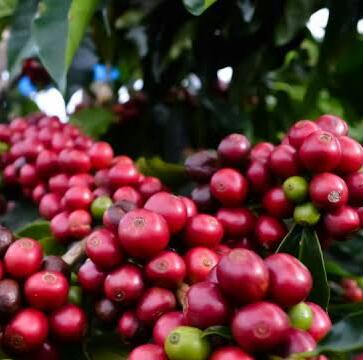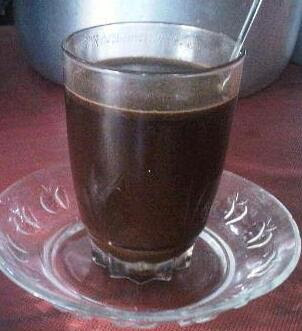Arabica Specialty Coffee Blue Tamblingan And Exotism Local Wisdom Mundu
Indonesia is one producer of the coffee and coffee paradise especially in the world. Many coffee farmers rely on life from there. Many people lifted their dignity from seed by seed which it produced.
There is a lot of coffee that could have overthrown the Blue Tamblingan Arabica Coffee. Sumatran coffees such as Gayo coffee have an earthy flavor, Javanese coffee, Colo coffee, Plukaran coffee also promise great enjoyment as well as coffee from the mountains of Papua. But Blue Tambligan Arabica coffee is a special coffee from Mundu.
Blue Tamblingan Arabica Coffee from the area around the sacred lake of Tamblingan, Munduk, Buleleng, Bali. Planted on an area of 40 hectares with an altitude of 1300 mdpl with the interspace of citrus plants and flowers. Surrounded by indigenous forest guarded by the villagers of Munduk and three other villages in strong indigenous linking, really the old green seeds are very attractive.
If you have time to come to one of these villages in North Bali, almost certainly the first treat you will receive is a coffee drink as a welcome greeting. Accompanied by snacks or not, sweet or sometimes bitter without sugar. So, before expressing the purpose of your visit arrival, first coffee must be tasted one two sips.
In North Bali, many people are more familiar with Banyuatis coffee. While there are many coffee producers, one of the special is the Munduk area with Arabica Blue Tamblingan Coffee. Only affection, less maximized its potential.
Arabica Blue Coffee Tamblingan can not be separated from the culture of growing coffee is very old. So old, without the citizens Munduk realize, coffee has characteristic mountain bertopografi village that is in the altitude of 600-1200 mpdl is a looming identity among the contents of coffee-producing regions in Indonesia. The village that is geographically ideal for the growing requirements of the exotic plant.
The period referred to around 1920 is the historical traces of coffee in North Bali, including in Munduk Village long before cloves began to booming in the Munduk people planted in the 1970s era. Although already entered the island of Bali since the VOC, new coffee into Bali's mainstay export commodities began in the mid-19th century.
That is, for decades, coffee triumphed alone as a prima donna farm crop that sustains the lives of Munduk citizens economically. Facts based on physical evidence encountered plus oral speech that have been heard clearly explain how intimate Munduk citizens actually with the culture of farming, one of them through the habit of cultivation of coffee.
Munduk and surroundings are coffee producers since the colonial era. People's memory of coffee is so strong. Formerly when the coffee harvest, Munduk such as the night market. For 24 hours nonstop, the crowd spilled from the garden to the village streets. Pickers and traders come from different parts of Bali. Munduk remains crowded when most of the coffee land changes with cloves.
The emotional relation of the Munduk farmers to coffee never really broke up. Coffee cultivation is still done today, either by embroidering old crops or returning the designation of lands previously planted with other agricultural commodities into coffee plantations.
As a marker of proximity to the culture of cultivation of coffee plants, in addition to the expression of devotion of course, not far from the center of the village crowd adjacent to the main irrigation channels that irrigate the gardens and paddy fields in Munduk built a temple that by the village subak called Pura Kopi.
This temple of 1959, throughout its existence, has undergone physical improvement twice, and last done in 2006 ago. This temple was established to worship God in His manifestation as Sanghyang Sangkara, an entity that bestows prosperity through of the world plants.
Pura Kopi becomes a monument that constantly nurtures memories, representation of respect and debt of gratitude of Munduk peasants to one of the agricultural crops that is be sustaining life across the generations.
Munduk Coffee has been only taken by big merchants en masse, without being labeled coffee from Munduk area. Or consumed by the people Munduk and surrounding areas, with the quality of coffee is less attention. Mundu's coffee has good qualities just may not be good in terms of picking and postharvest processing, mainly drying and sorting. For example from of the picking process, perfunctory drying, without a good sorting process, and roasted ordinary.
During this time the coffee is served in almost all the restaurants in Munduk is Robusta coffee. That also robusta not yet well processed. Whereas robusta in Munduk actually good quality, and have arabika that have special flavor.
Arabica Blue Coffee This tamblingan is a special offering for coffee lovers all over the world. Arabica Blue Tamblingan Coffee is an arabica coffee from Tamblingan. Blue Tamblingan Arabica Coffee is Mundu Coffee that has been through the process of picking until post-harvest well to make Arabica Coffee Blue Tamblingan very special coffee. Large seeds, typical flavor. His character is strong. Fresh and savory attached.
Blue Arabica Coffee Tamblingan of the beans picked more carefully, dried better, sorted more carefully, roasted more carefully, and served more adequately, will produce a cup of coffee that has a distinctive flavor, and of course has better selling value.
The roasting process that determines the taste of coffee. Start with medium, continue the second roaster to get medium to dark, to get the light on the last roasting process. The third term is a term for the type of roasted coffee refers to the level of maturity of seeds after roasted.
Arabica Blue Coffee Tamblingan with two roasted models namely 'light roasted' and 'medium roasted'. And the special, there are also green beans with a drying model winery process.
The foreign tourists and dometik tourists who visit Munduk, will start in droves queue tasting Arabica Blue Tamblingan Coffee, with a variety of roasting and various models of drying.
In Yogya, Blue Tamblingan began to be in great demand. It's just for a while, if you want to sip a special coffee that is land area of only 40 hectares of this, can only be done in the Coffee Shop (a complex with angkringan Mojok).
In the hands of the reliable brewers, rich flavored coffee beans mixed with poor flavored seeds, the results often occur; great things. Much better than arabica seeds mixed with other arabica seeds. If likened to it like the meeting of intelligence and wisdom. Science certainly will never succeed in ensuring.
In coffee hasanah. No one roles over the other. The coffee roaster is not necessarily superior to the baristas. Barista is not necessarily a lossee great from coffee farmers. Interdependence is very real. Can not one of life left the role or even negate the other.
It's time to spread Blue Arabica Coffee Tamblingan this special and very limited coffee beans to as many coffee shops as possible, so that more tongues will taste it.







